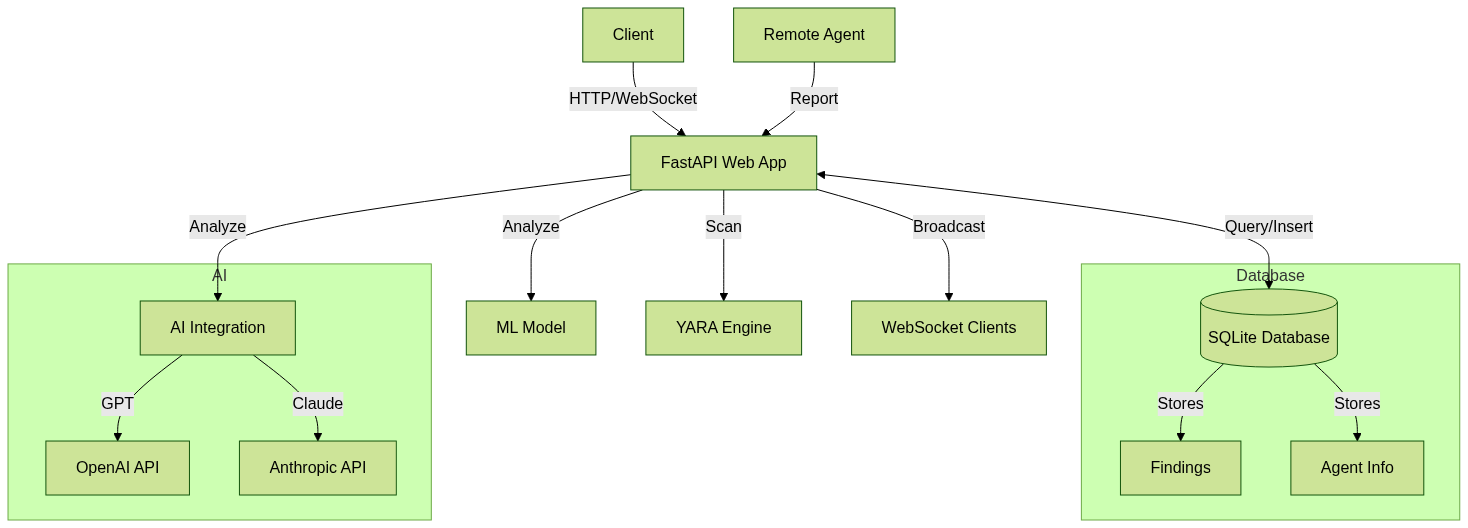-
Notifications
You must be signed in to change notification settings - Fork 20
Architecture
Michael Haag edited this page Jul 23, 2024
·
1 revision
ShellSweepX is a web application designed for detecting and analyzing potential webshells. This document outlines the high-level architecture of the system.
- Web Application (FastAPI): The core of ShellSweepX, handling HTTP requests and WebSocket connections.
- Database (SQLite): Stores findings, agent information, and other relevant data.
- Machine Learning Model: Used for initial classification of files as potential webshells.
- YARA Rules Engine: Performs pattern matching on files using custom YARA rules.
- AI Integration: Utilizes GPT or Claude for in-depth analysis of potential webshells.
- Agent System: Allows remote scanning and reporting from distributed agents.
-
Findings Table:
- Stores information about analyzed files
- Fields: id, sha256, file_name, result, file_size, content, feedback, analysis, entropy, std_dev, vt_score, yara_matches, created_at, submitted_timestamp, last_analyzed_timestamp, submitting_agents
-
Agents Table:
- Tracks information about remote agents
- Fields: id, agent_id, computer_name, last_checkin
-
File Upload and Analysis:
- Files are uploaded and analyzed using the ML model
- Results are stored in the findings table
- YARA rules are applied if enabled
-
Agent Reporting:
- Remote agents scan files and report results
- Findings are stored in the database
- Agent check-ins are recorded
-
AI-Powered Triage:
- Suspicious files can be further analyzed using GPT or Claude
- AI analysis results are stored in the findings table
-
YARA Rule Management:
- Custom YARA rules can be added, updated, or deleted
- Rules are stored as files in the YARA_RULES_DIR
-
Dashboard and Reporting:
- Provides an overview of recent detections and statistics
- Generates charts for trend analysis and webshell type distribution
-
Real-time Updates:
- Uses WebSockets to broadcast updates to connected clients
-
Settings Management:
- Allows configuration of API keys, YARA settings, and AI prompts
- Settings are encrypted and stored in a file
- Files are uploaded or reported by agents
- The ML model performs initial classification
- YARA rules are applied if enabled
- Results are stored in the database
- Suspicious files can be triaged with AI for deeper analysis
- Dashboard and reports are generated from the stored data
- Real-time updates are broadcast to connected clients
This architecture allows ShellSweepX to efficiently process and analyze files, store results, and provide real-time updates to users, while also supporting distributed scanning through the agent system.
